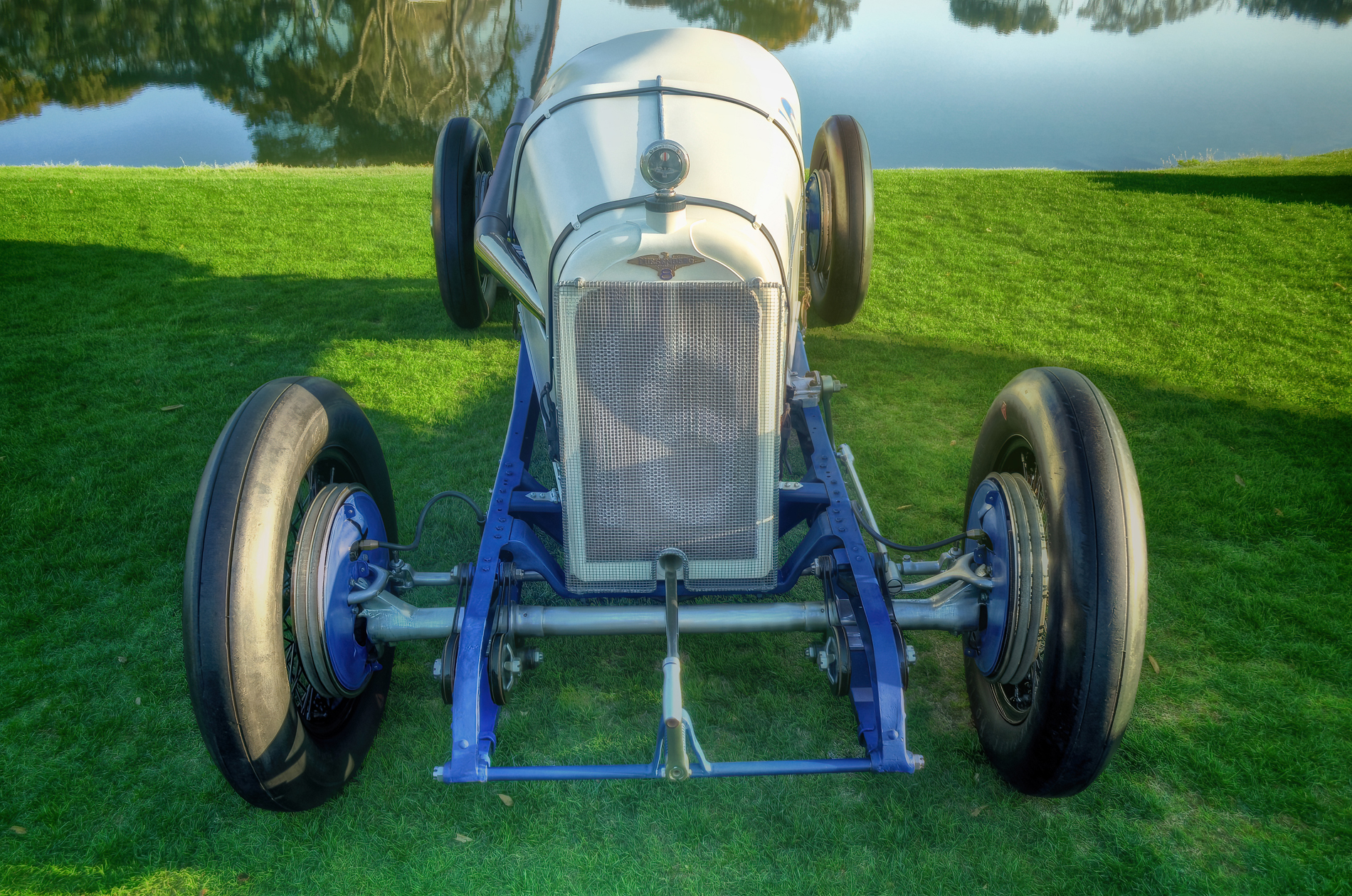
The 1921 Duesenberg Race Car is a significant vehicle in the history of American motorsport, known for its advanced engineering and impressive performance. Duesenberg Motors Company, founded by brothers Fred and August Duesenberg, was renowned for producing high-performance and luxury automobiles. Fred & August Duesenberg were self-trained engineers who used their skills and imaginations to the extent that they became known as pioneering geniuses. Their successes spanned four decades and encompassed everything from bicycling to airplane design.
In 1921, the brothers constructed four race cars, featuring four-wheel braking. These cars were designed for the first post-WWI Grand Prix at LeMans. Jimmy Murphy won the event, piloting one of the three Duesenbergs in its first significant European victory. An American victory of this magnitude was not to occur again until 1966.
Joe Boyer drove this car in that event. It did not finish the race but is the only intact survivor of the original four. It was later purchased by Harry Hartz, who finished second in the 1922 Indianapolis 500 with this car.
Overview
- Production Year: 1921
- Manufacturer: Duesenberg Motors Company
- Model: Race Car
- Body Style: Open-wheel race car
Design and Specifications
- Engine:
- The 1921 Duesenberg race car is powered by a straight-8 engine.
- The engine displacement is around 3.0 liters (183 cubic inches).
- It features a double overhead camshaft (DOHC) design and four valves per cylinder, which was advanced technology for the time.
- It produces approximately 115 horsepower, a substantial amount for the era.
- Transmission:
- The car is equipped with a 3-speed manual transmission.
- The gearbox is designed for quick acceleration and high-speed performance on racing circuits.
- Chassis:
- The chassis is a lightweight yet strong steel frame, providing rigidity and durability.
- The wheelbase is relatively short, enhancing agility and handling on tight corners.
- Suspension:
- The front suspension consists of a solid axle with semi-elliptic leaf springs.
- The rear suspension features a solid axle with semi-elliptic leaf springs.
- This setup provides a balance between stability and responsive handling.
- Brakes:
- The Duesenberg race car is equipped with mechanical drum brakes.
- These brakes provide adequate stopping power for the high-speed performance of the vehicle.
Performance
- Top Speed: The Duesenberg race car could achieve top speeds of around 100 mph (161 km/h), which was exceptional for the time.
- Acceleration: The powerful straight-8 engine allows for rapid acceleration, making it highly competitive in racing events.
- Handling: The lightweight chassis and well-tuned suspension offer excellent handling and maneuverability, essential for success on racing circuits.
Design Features
- Bodywork:
- The body of the race car is designed with aerodynamics and weight reduction in mind.
- It features a streamlined, open-wheel design that minimizes drag and enhances speed.
- The body panels are typically made from aluminum to keep the weight low.
- Interior:
- The interior is minimalist, focused on functionality and driver comfort.
- The driver's seat is a single bucket-style seat, providing support during high-speed turns and bumps.
- The dashboard includes essential gauges and controls, arranged for easy access during races.
- Styling:
- The styling of the Duesenberg race car is characterized by its sleek, aggressive look with bold graphics and sponsor logos.
- Its distinctive design and racing livery make it a standout on the track and a favorite among fans.
Legacy and Historical Significance
- Historical Significance:
- The 1921 Duesenberg race car represents a key period in automotive racing history, showcasing the technological advancements and competitive spirit of the early 20th century.
- It highlights the Duesenberg brothers' contributions to motorsport, particularly their pioneering work in engine design and performance.
- Racing Success:
- The Duesenberg race car was successful and competitive, often dominating racing events in the United States and abroad.
- Notably, Duesenberg race cars won the Indianapolis 500 in 1924, 1925, and 1927, solidifying the brand's legacy in motorsport.
Purchase a Print of the 1921 Duesenberg Race Car Online here.
The Vintage Automobile Article Index


